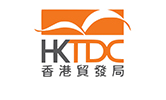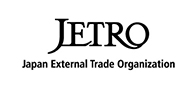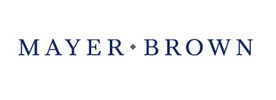Computers, Hardware & Software Industry Market Research
Competitive Intelligence, Business Analysis, Forecasts, Market Size, Trends, Companies, Statistics
Available Data Services: Custom Research Projects, Database Subsription or PDF eBooks
PLUNKETT PROVIDES IN-DEPTH STATISTICS TABLES COVERING THE FOLLOWING INDUSTRY TOPICS:
-
Computers, Hardware & Software Industry Statistics and Market Size Overview
-
Internet Access Technologies Compared
-
U.S. Web-Based Services Industries Quarterly Revenue: Q4 2022-Q3 2023
-
Expenditures for ICT Equipment & Computer Software for Companies with Employees, U.S.: 2008-2013
-
Software Publishing Industry, U.S.: Estimated Revenue, Inventories & Expenses: 2017-2022
-
Internet Publishing & Broadcasting & Web Search Portals: Estimated Revenue & Expenses, U.S.: 2016-2021
-
Estimated Quarterly U.S. Retail Sales, Total & E-Commerce: 1st Quarter 2011-3rd Quarter 2020
-
Top Ten Suppliers & Destinations of U.S. Computers & Electronic Products: 2017-First Half 2023
-
Value of Computers & Electronic Products Manufacturers’ Shipments, Inventories & Orders by Industry, U.S.: 2016 - September 2023
-
Exports & Imports of Telecommunications Equipment, U.S.: 2017-2022
-
Exports, Imports & Trade Balance of Computers & Electronic Products, U.S.: 2015-3nd Quarter 2021
-
Number of Business & Residential High Speed Internet Lines, U.S.: 2018-2023
-
Computer Industry Employment by Business Type, U.S.: 2018-October 2023
-
InfoTech Employment, U.S.: 2001-October 2020
Top Companies Profiled
The following is a partial listing for this industry. As a subscriber, you will have access to the leading companies and top growth companies. This includes publicly-held, private, subsidiary and joint venture companies, on a global basis as well as in the U.S.
Hundreds of Top Companies Profiled, Including:
PLUNKETT PROVIDES UNIQUE ANALYSIS OF THE FOLLOWING TRENDS THAT ARE DRIVING THIS INDUSTRY:
-
-
Introduction to the InfoTech Industry
-
Hot Fields Within Computer Hardware and Software Include Artificial Intelligence, Cybersecurity and Big Data
-
Memory and Storage Needs Soar While Miniaturization Lowers Prices
-
Tablets and Smartphones Cause Decline in PC and Laptop Computer Market
-
Computer and Smartphone Markets in India and China Targeted by Manufacturers/Domestic Manufacturing and Investment Grow
-
Supercomputing Hits 33.86 Petaflops/IBM’s Watson Expands Commercial Applications for Big Data
-
New Semiconductors Provide Higher Speeds and Lower Power Consumption/China Invests in Domestic Chip Manufacturing and Research
-
Open Source Systems Grow/New Operating Systems Launch
-
Cloud Computing and Software as a Service (SaaS) Point the Way to the Future
-
Growth in Big Data Supported by Expansion of Cloud Computing and Predictive Analytics
-
Wi-Fi Enables Wireless Traffic Growth
-
Google, CableVision, FreedomPop and Republic Wireless Bypass Cellular Networks with Wi-Fi
-
Global Internet Market Tops 3.2 Billion Users/Ultrafast Broadband Expands, both Fixed and Wireless
-
Fiber-to-the-Home (FTTH) Gains Traction
-
TVs Are Internet Ready/Game Consoles and Set Top Accessories like Roku and Chromecast Stream Content
-
Electronic Health Records (EHR) Digitize Patient Data at an Accelerating Pace
-
Many Industry Sectors Seek Consulting and Outsourcing Income, Competing with Pure Consultancies
-
The Future: Pervasive Computing and Complete Mobility Will Be Standard
-
Silicon Chips with 7-Nanometer Density/Memristors/Nanotechnology to Create Powerful Semiconductors with Advantages Over Silicon
-
Nanotechnology Holds the Key to the Ultradense NRAM Digital Memory of the Future
-
Virtualization of Servers Leads to Data Center Efficiency
-
Breakthroughs Achieved in Quantum Computing
-
Voice Recognition Changes the Wireless World
-
The “Internet of Things (IoT)” and M2M: Wireless Sensors to Boom, Aided by Nanotechnology
-
Artificial Intelligence (AI), Deep Learning and Machine Learning Advance into Commercial Applications, Including Health Care and Robotics
-
Cybersecurity Concerns Lead to Research and Investment
-
Wearable Sensors Track Exercise Data/Apparel and Shoe Manufacturers Adopt Technologies
-
Cloud Computing Squeezes the Outsourcing Industry
-
Digital Assistants Include Amazon’s Echo and Google’s Home/Alexa and Similar Software Power Third-Party Developers
-
Virtual Reality and 3-D Games Open New Opportunities/Immersion Games to Grow
-
Digital Currency, Bitcoin and Blockchain Technologies Advance
-
IT Consulting/Software Consulting/ Computer Operations Consulting
-
The Coronavirus’ Effect on the Computers, Hardware & Software Industry
-
Smartwatches, Wearable Electronics and Electronics Incorporated into Apparel Begin to Enter the Marketplace
Key Findings:
A complete market research report, including forecasts and market estimates, technologies analysis and developments at innovative firms within the Computers, Hardware & Software Industry. Gain vital insights that can help shape strategy for business development, product development and investments.
Key Features:
-
Business trends analysis
-
In-depth industry overview
-
Technology trends analysis
-
Forecasts
-
Spending, investment, and consumption discussions
-
In-depth industry statistics and metrics
-
Industry employment numbers
Additional Key Features Include:
Industry Glossary
Industry Contacts list, including Professional Societies and Industry Associations
Profiles of industry-leading companies
-
U.S. and Global Firms
-
Publicly held, Private and Subsidiaries
-
Executive Contacts
-
Revenues
-
For Public Companies: Detailed Financial Summaries
Pages: 652
Statistical Tables Provided: 10
Companies Profiled: 500
Geographic Focus: Global
Price: $399.99
Key Questions Answered Include:
-
How is the industry evolving?
-
How is the industry being shaped by new technologies?
-
How is demand growing in emerging markets and mature economies?
-
What is the size of the market now and in the future?
-
What are the financial results of the leading companies?
-
What are the names and titles of top executives?
-
What are the top companies and what are their revenues?
This feature-rich report covers competitive intelligence, market research and business analysis—everything you need to know about the Computers, Hardware & Software Industry.
Plunkett Research Provides Unique Analysis of the Following Major Trends Affecting the Computers, Hardware & Software Industry
-
Introduction to the Computers, Hardware & Software Industry
-
Post-Coronavirus Comments on the Computers, Hardware & Software Industry
-
Hot Fields Within Computers, Hardware & Software Include Artificial Intelligence (AI), Cybersecurity and the Internet of Things (IoT)
-
Supercomputing Hits 1,194 Petaflops/ IBM’s Watson Expands Commercial Applications for Big Data
-
Cloud Computing and Software as a Service (SaaS) Point the Way to the Future
-
Growth in Big Data Supported by Expansion of Cloud Computing and Predictive Analytics
-
Wi-Fi Enables Wireless Traffic Growth, Including the Internet of Things (IoT)
-
Global Internet Market Tops 5.40 Billion Users/Ultrafast Broadband Expands, both Fixed and Wireless
-
Fiber-to-the-Home (FTTH) Gains Traction
-
Streaming Apps Take Over TVs, Leading to Cord Cutting/Subscription Losses for Cable and Satellite
-
Electronic Health Records (EHR) Digitize Patient Data at an Accelerating Pace
-
Many Industry Sectors Seek Consulting and Outsourcing Income, Competing with Pure Consultancies
-
Chips Built with Low Nanometer, High Density Design/Semiconductor Manufacturing Booms/Faster Chips Power Artificial Intelligence (AI)
-
Breakthroughs Achieved in Quantum Computing
-
Voice, Face & Image Recognition Changes the Wireless World, Enhanced Through Artificial Intelligence (AI)
-
Digital Assistants Include Amazon’s Echo and Google’s Home/Alexa and Similar Software Power Third-Party Developers
-
Wearable Sensors Track Exercise Data/Apparel and Shoe Manufacturers Adopt Technologies
-
The Internet of Things (IoT) and M2M to Boom, Enhanced by Artificial Intelligence (AI)/Open New Avenues for Hacking
-
Artificial Intelligence (AI), Deep Learning and Machine Learning Advance into Commercial Applications, Including Health Care and Robotics
-
IT Consulting/Software Consulting/ Computer Operations Consulting
-
Virtual Reality/Augmented Reality and 3-D Technologies Create Opportunities for the Tech Industry/Immersion Games to Grow
-
The Future: Pervasive Computing and Complete Mobility Will Be Standard/Artificial Intelligence (AI) Will Boost Nearly all Sectors
Plunkett Research Provides In-Depth Tables for the Following Computers, Hardware & Software Industry Statistics
-
Computers, Hardware & Software Industry Statistics and Market Size Overview
-
Internet Access Technologies Compared
-
U.S. Computer Software & Related Services Quarterly Revenue: Q4 2022-Q3 2023
-
Software Publishing Industry, U.S.: Estimated Revenue, Inventories & Expenses: 2017-2022
-
Internet Publishing & Broadcasting & Web Search Portals: Estimated Revenue & Expenses, U.S.: 2016-2021
-
Top Ten Suppliers & Destinations of U.S. Computers & Electronic Products: 2017- First Half 2023
-
Value of Computers & Electronic Products Manufacturers' Shipments, Inventories & Orders by Industry, U.S.: 2016-September 2023
-
Exports & Imports of Telecommunications Equipment, U.S.: 2017- 2022
-
Number of Business & Residential High Speed Internet Lines, U.S.: 2018-2023
-
Computer Industry Employment by Business Type, U.S.: 2018-October 2023



















